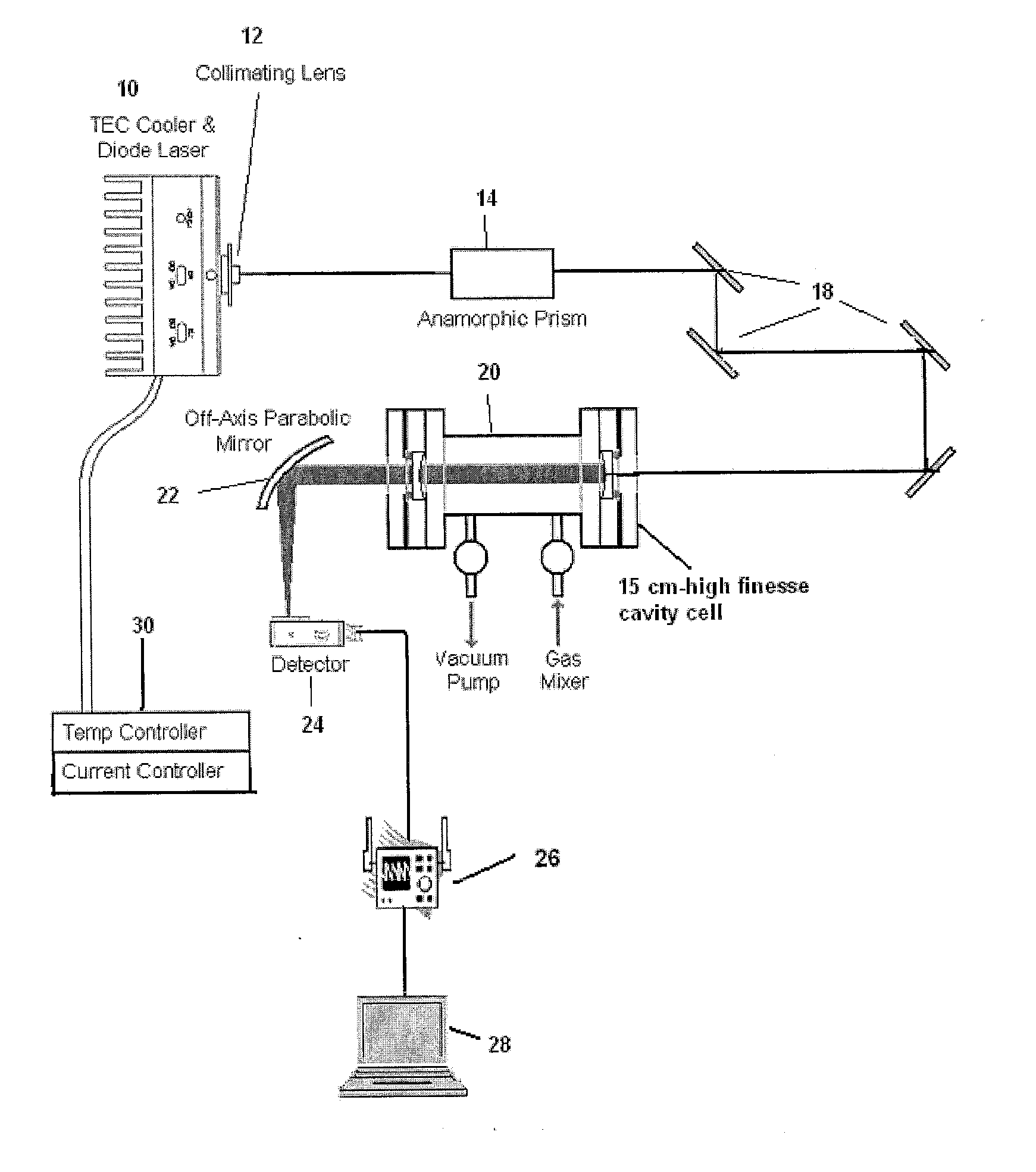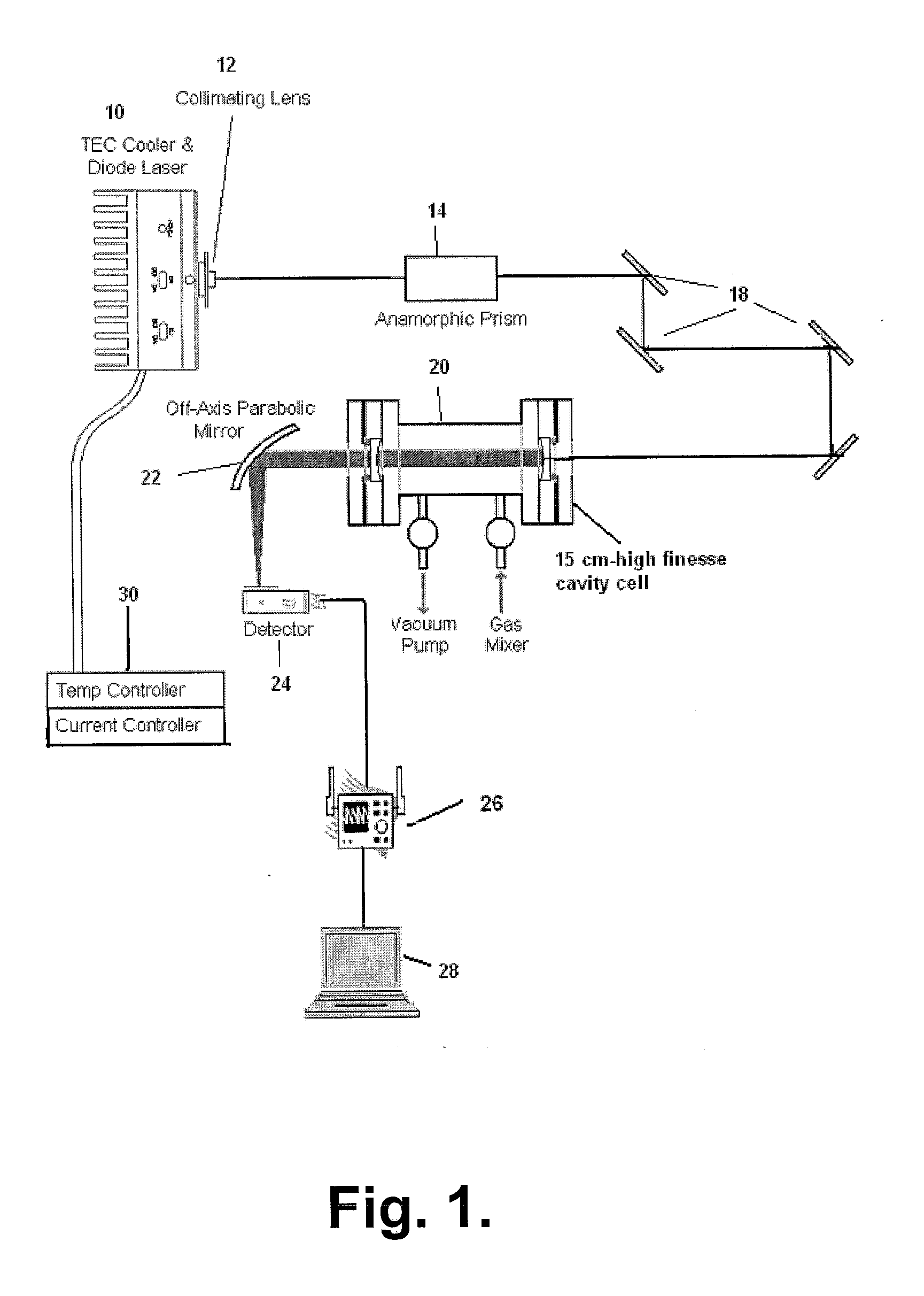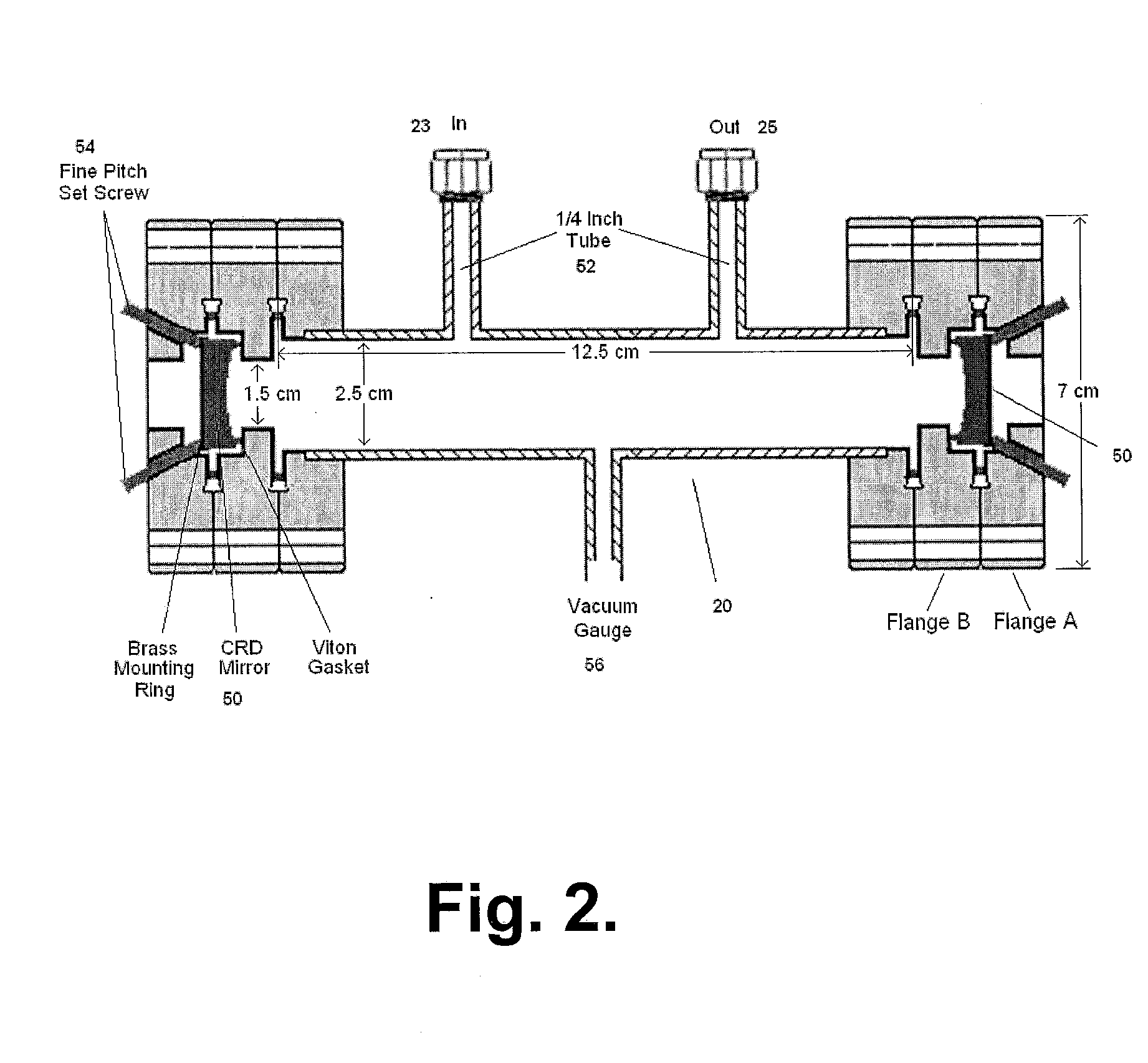Sensitive and Compact Sensor Employing a Visible Diode Laser and A High Finesse Optical Cavity for Trace Gas Detection (NO2)
a diode laser and visible diode technology, applied in the field of trace gas detection, can solve the problems of high precision optical adjustment and stability, severe limitations of field based detection applications, and inconvenient field based monitoring purposes, and achieve the effects of improving detection sensitivity, good sensitivity of detection, and good stability of performan
- Summary
- Abstract
- Description
- Claims
- Application Information
AI Technical Summary
Benefits of technology
Problems solved by technology
Method used
Image
Examples
Embodiment Construction
[0043]The present invention uses Multiple Line Integrated Absorption Spectroscopy (MLIAS) coupled with Off Axis Cavity Integrated Spectroscopy (OA-ICOS) to obtain good sensitivity of detection and good stability of performance.
Off-Axis Integrated Cavity Output Spectroscopy (OA-ICOS)
[0044]In cavity enhanced absorption spectroscopy techniques, a tunable laser and a high finesse optical cavity are used, and the cavity output is recorded while tuning the laser over the wavelength range of interest. These techniques are known in the literature as integrated cavity output spectroscopy (ICOS) (See, A. O'Keefe, J. J. Scherer, J. B. Paul, “CW Integrated Cavity Output Spectroscopy,” Chem. Phys. Lett., 307, 343-349 (1999)); and cavity enhanced absorption spectroscopy (CEAS) (See R. Engeln, G. Berden, R. Peters, G. Meijer, “Cavity enhanced absorption and cavity enhanced magnetic rotation spectroscopy,” Rev. Sci. Instrum. 69, 3763 (1998)). In Off-Axis ICOS the laser is aligned in an off-axis con...
PUM
| Property | Measurement | Unit |
|---|---|---|
| volume | aaaaa | aaaaa |
| wavelengths | aaaaa | aaaaa |
| wavelengths | aaaaa | aaaaa |
Abstract
Description
Claims
Application Information
 Login to View More
Login to View More - R&D
- Intellectual Property
- Life Sciences
- Materials
- Tech Scout
- Unparalleled Data Quality
- Higher Quality Content
- 60% Fewer Hallucinations
Browse by: Latest US Patents, China's latest patents, Technical Efficacy Thesaurus, Application Domain, Technology Topic, Popular Technical Reports.
© 2025 PatSnap. All rights reserved.Legal|Privacy policy|Modern Slavery Act Transparency Statement|Sitemap|About US| Contact US: help@patsnap.com



